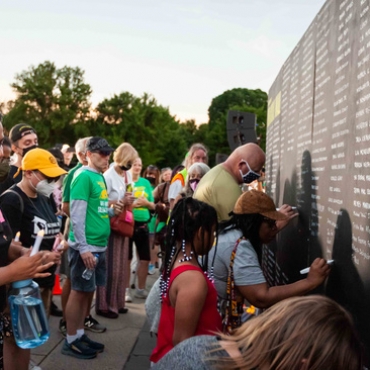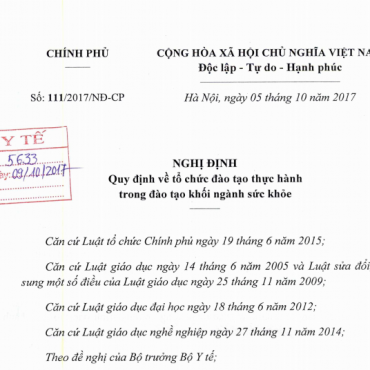Contact Admission
International Collaboration
Immunogenicity of a Single Dose of SARS-CoV-2 Messenger RNA Vaccine in Solid Organ Transplant Recipients
Immunogenicity of a Single Dose of SARS-CoV-2 Messenger RNA Vaccine in Solid Organ Transplant Recipients
Brian J. Boyarsky, MD1; William A. Werbel, MD2; Robin K. Avery, MD2; et alAaron A. R. Tobian, MD, PhD3; Allan B. Massie, PhD1; Dorry L. Segev, MD, PhD1; Jacqueline M. Garonzik-Wang, MD, PhD1
JAMA. 2021;325(17):1784-1786. doi:10.1001/jama.2021.4385
Immunocompromised individuals have been excluded from studies of SARS-CoV-2 messenger RNA (mRNA) vaccines. In such patients, the immune response to vaccination may be blunted. To better understand the immunogenicity of mRNA vaccines in immunocompromised individuals, we quantified the humoral response to the first dose in solid organ transplant recipients.
Methods
Transplant recipients across the US were recruited though social media to participate in this prospective cohort, and those who underwent SARS-CoV-2 vaccination between December 16, 2020, and February 5, 2021, were included. The study was approved by the Johns Hopkins University institutional review board and participants provided informed consent electronically. Participants underwent either at-home blood sampling with the TAPII blood collection device (Seventh Sense Biosystems) or standard venipuncture.
The TAPII samples were tested using an enzyme immunoassay (EUROIMMUN) that tests for antibodies to the S1 domain of the SARS-CoV-2 spike protein.1 The venipuncture samples were tested using the anti–SARS-CoV-2 S enzyme immunoassay (Roche Elecsys) that tests for antibodies against the receptor-binding domain of the SARS-CoV-2 spike protein. Both tests are semiquantitative, correspond to mRNA vaccine antigens, and are consistently correlated with neutralizing immunity.2-4 The sensitivity and specificity of the enzyme immunoassays are excellent for detection of the antispike humoral response to SARS-CoV-2 infection (sensitivity of 87.1% and specificity of 98.9% for EUROIMMUN3 and sensitivity of 84.0% and specificity of 100% for Roche Elecsys4) and are analogous to the antispike antibody assays used during immunogenicity assessments in mRNA vaccine clinical trials.
We assessed the proportion of patients who developed a positive antibody response with exact binomial 95% CIs. We evaluated the associations among demographic and clinical characteristics, vaccine type, and positive antibody response using modified Poisson regression with a robust variance estimator. A sensitivity analysis of vaccine type limited to those tested 14 to 21 days after vaccination was performed. All tests were 2-sided with α = .05. Analyses were performed using Stata version 16.1 (StataCorp).
Results
There were 436 transplant recipients included in the study (Table). None had a prior polymerase chain reaction–confirmed diagnosis of COVID-19. The median age was 55.9 years (interquartile range [IQR], 41.3-67.4 years), 61% were women, and 89% were White transplant recipients; 52% received the BNT162b2 vaccine (Pfizer-BioNTech) and 48% received the mRNA-1273 vaccine (Moderna). The median time since transplant was 6.2 years (IQR, 2.7-12.7 years). The maintenance immunosuppression regimen included tacrolimus (83%), corticosteroids (54%), mycophenolate (66%), azathioprine (9%), sirolimus (4%), and everolimus (2%). At a median of 20 days (IQR, 17-24 days) after the first dose of vaccine, antibody (anti-S1 or anti–receptor-binding domain) was detectable in 76 of 436 participants (17%; 95% CI, 14%-21%).
Transplant recipients receiving anti–metabolite maintenance immunosuppression therapy were less likely to develop an antibody response than those not receiving such immunosuppression therapy (37% vs 63%, respectively; adjusted incidence rate ratio [IRR], 0.22 [95% CI, 0.15-0.34]; P < .001) (Table). Older transplant recipients were less likely to develop an antibody response (adjusted IRR, 0.83 [95% CI, 0.73-0.93] per 10 years; P = .002). Those who received mRNA-1273 were more likely to develop an antibody response than those receiving BNT162b2 (69% vs 31%, respectively; adjusted IRR, 2.15 [95% CI, 1.29-3.57]; P = .003). This association was similar in a sensitivity analysis limited to those tested 14 to 21 days after vaccination (n = 245; adjusted IRR, 2.29 [95% CI, 1.32-3.94]; P = .003).
Discussion
In this study of immunogenicity of the first dose of the mRNA SARS-CoV-2 vaccine among solid organ transplant recipients, the majority of participants did not mount appreciable antispike antibody responses. However, younger participants, those not receiving anti–metabolite maintenance immunosuppression, and those who received the mRNA-1273 vaccine were more likely to develop antibody responses. These results contrast with the robust early immunogenicity observed in mRNA vaccine trials, including 100% antispike seroconversion by day 15 following vaccination with mRNA-12735 and by day 21 following vaccination with BNT162b2.6
Limitations include a convenience sample that may lack generalizability, lack of serial measurements after vaccination, and lack of a concurrent control group without immunosuppression. In addition, these data represent the humoral response to the first dose of a 2-dose series.
These findings of poor antispike antibody responses in organ transplant recipients after the first dose of mRNA vaccines suggest that such patients may remain at higher early risk for COVID-19 despite vaccination. Deeper immunophenotyping of transplant recipients after vaccination, including characterization of memory B-cell and T-cell responses, will be important in determining vaccination strategies as well as immunologic responses after the second dose.
Section Editor: Jody W. Zylke, MD, Deputy Editor.
Article Information
Accepted for Publication: March 8, 2021.
Published Online: March 15, 2021. doi:10.1001/jama.2021.4385
Corresponding Author: Dorry L. Segev, MD, PhD, Department of Surgery, Johns Hopkins University Medical Institutions, 2000 E Monument St, Baltimore, MD 21205 (dorry@jhmi.edu).
Author Contributions: Drs Segev and Garonzik-Wang had full access to all of the data in the study and take responsibility for the integrity of the data and the accuracy of the data analysis.
Concept and design: All authors.
Acquisition, analysis, or interpretation of data: All authors.
Drafting of the manuscript: Boyarsky, Werbel, Avery, Massie, Segev, Garonzik-Wang.
Critical revision of the manuscript for important intellectual content: All authors.
Statistical analysis: Boyarsky, Massie, Segev.
Administrative, technical, or material support: Boyarsky, Tobian, Segev, Garonzik-Wang.
Supervision: Massie, Segev, Garonzik-Wang.
Conflict of Interest Disclosures: Dr Avery reported receiving grant support from Aicuris, Astellas, Chimerix, Merck, Oxford Immunotec, Qiagen, and Takeda/Shire. Dr Segev reported serving as a consultant to and receiving honoraria for speaking from Sanofi, Novartis, CSL Behring, Jazz Pharmaceuticals, Veloxis, Mallincrodt, and Thermo Fisher Scientific. No other disclosures were reported.
Funding/Support: This work was supported by the Ben-Dov family; grants F32DK124941 (awarded to Dr Boyarsky), K01DK101677 (to Dr Massie), and K23DK115908 (to Dr Garonzik-Wang) from the National Institute of Diabetes and Digestive and Kidney Diseases; grant gSAN-201C0WW (to Dr Werbel) from the Transplantation and Immunology Research Network of the American Society of Transplantation; and grant K24AI144954 (to Dr Segev) from the National Institute of Allergy and Infectious Diseases.
Role of the Funder/Sponsor: The funders had no role in the design and conduct of the study; collection, management, analysis, and interpretation of the data; preparation, review, or approval of the manuscript; and decision to submit the manuscript for publication.
Disclaimer: The analyses described are the responsibility of the authors and do not necessarily reflect the views or policies of the US Department of Health and Human Services. The mention of trade names, commercial products, or organizations does not imply endorsement by the US government.
Additional Contributions: We acknowledge the following individuals for their assistance with this study, none of whom was compensated for his or her contributions: Oliver B. Laeyendecker, PhD, Yukari C. Manabe, MD, Christine M. Durand, MD, Caoilfhionn M. Connolly, MD, and Julie J. Paik, MD, MHS (all 5 for analysis and affiliated with the Department of Medicine, Johns Hopkins University School of Medicine, Baltimore, Maryland); William A. Clarke, PhD, and Patrizio P. Caturegli, MD, MPH (both for analysis and affiliated with the Department of Pathology, Johns Hopkins University School of Medicine, Baltimore, Maryland); Aaron M. Milstone, MD, MHS (data collection and analysis), and Ani Voskertchian, MPH (data collection) (both affiliated with the Department of Pediatrics, Johns Hopkins University School of Medicine, Baltimore, Maryland); and Sunjae Bae, MD, PhD (analysis), Michael T. Ou, BS (data collection and writing/editing assistance), and Richard Wang, BA, Aura T. Teles, BS, Ross S. Greenberg, BA, Jake A. Ruddy, BS, Leyla R. Herbst, BA, Michelle R. Krach, MS, Michael D. Irving, BA, Kayleigh M. Herrick-Reynolds, MD, Mackenzie A. Eagleson, MD, Andrew M. Hallett, MD, and Victoria A. Bendersky, MD (11 for data collection) (all 13 affiliated with the Department of Surgery, Johns Hopkins University School of Medicine, Baltimore, Maryland).
References
1.Boyarsky BJ, Ou MT, Werbel WA, et al. Early development and durability of SARS-CoV-2 antibodies among solid organ transplant recipients: a pilot study. Transplantation. Published online January 19, 2021. doi:10.1097/tp.0000000000003637PubMedGoogle Scholar
2.Klein SL, Pekosz A, Park HS, et al. Sex, age, and hospitalization drive antibody responses in a COVID-19 convalescent plasma donor population. J Clin Invest. 2020;130(11):6141-6150. doi:10.1172/JCI142004PubMedGoogle ScholarCrossref
3.Patel EU, Bloch EM, Clarke W, et al. Comparative performance of five commercially available serologic assays to detect antibodies to SARS-CoV-2 and identify individuals with high neutralizing titers. J Clin Microbiol. 2021;59(2):e02257-20. doi:10.1128/JCM.02257-20PubMedGoogle Scholar
4.Higgins V, Fabros A, Kulasingam V. Quantitative measurement of anti-SARS-CoV-2 antibodies: analytical and clinical evaluation. J Clin Microbiol. Published online March 19, 2021. doi:10.1128/JCM.03149-20PubMedGoogle Scholar
5.Jackson LA, Anderson EJ, Rouphael NG, et al; mRNA-1273 Study Group. An mRNA vaccine against SARS-CoV-2—preliminary report. N Engl J Med. 2020;383(20):1920-1931. doi:10.1056/NEJMoa2022483PubMedGoogle ScholarCrossref
6.Walsh EE, Frenck RW Jr, Falsey AR, et al. Safety and immunogenicity of two RNA-based Covid-19 vaccine candidates. N Engl J Med. 2020;383(25):2439-2450. doi:10.1056/NEJMoa2027906PubMedGoogle ScholarCrossref
Source: https://jamanetwork.com/journals/jama/fullarticle/2777685?guestAccessKey=36ad3944-3d80-4022-8dd0-40b218b0cb6d&utm_source=silverchair&utm_campaign=jama_network&utm_content=covid_weekly_highlights&utm_medium=email
Other library
- One in 10 People Who Had Omicron Got Long COVID: Study ( 20:25 - 01/06/2023 )
- Physical Medicine Academy Issues Guidance on Long COVID Neurologic Symptoms ( 09:58 - 19/05/2023 )
- Breakthrough' Study: Diabetes Drug Helps Prevent Long COVID ( 08:55 - 15/03/2023 )
- BCG vaccine (thuốc chủng ngừa bệnh lao) & SARS-CoV 2 (covid-19) infection ( 10:08 - 27/10/2022 )
- Đại dịch COVID-19 đã kết thúc? ( 09:11 - 22/09/2022 )
- Dị hình giới tính ở COVID-19: Ý nghĩa tiềm năng về lâm sàng và sức khỏe cộng đồng ( 09:22 - 19/03/2022 )
- COVID-19 Update ( 21:00 - 06/03/2022 )
- Một người có thể tái mắc Covid-19 bao nhiêu lần ?? / kèm 6 tài liệu mới ... do "waning immunity", xảy ra ≥6 tháng sau chủng ngừa hay mắc nhiễm .. ( 20:25 - 06/03/2022 )
- T-cells from common colds can provide protection against COVID-19 - study ( 08:25 - 11/01/2022 )
- Coronavirus Can Spread to Heart, Brain Days After Infection ( 07:56 - 30/12/2021 )
















